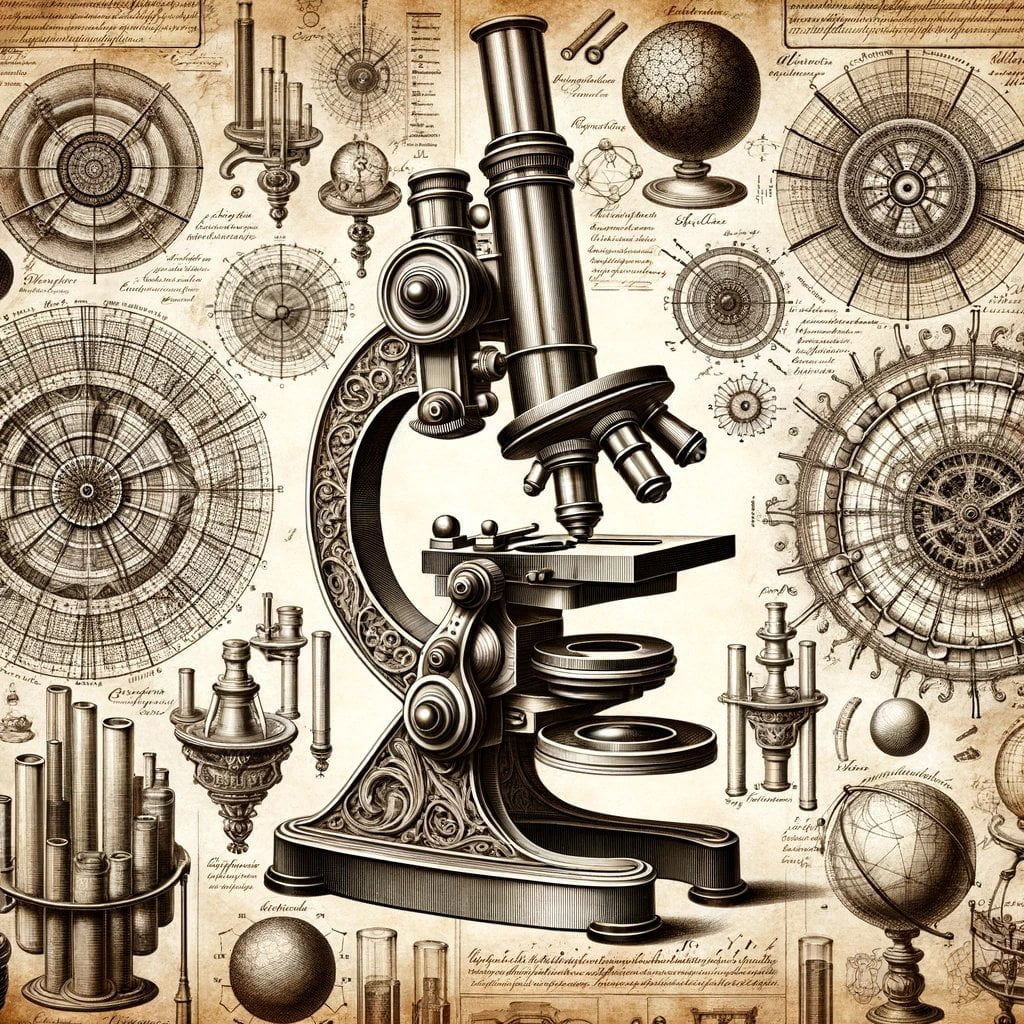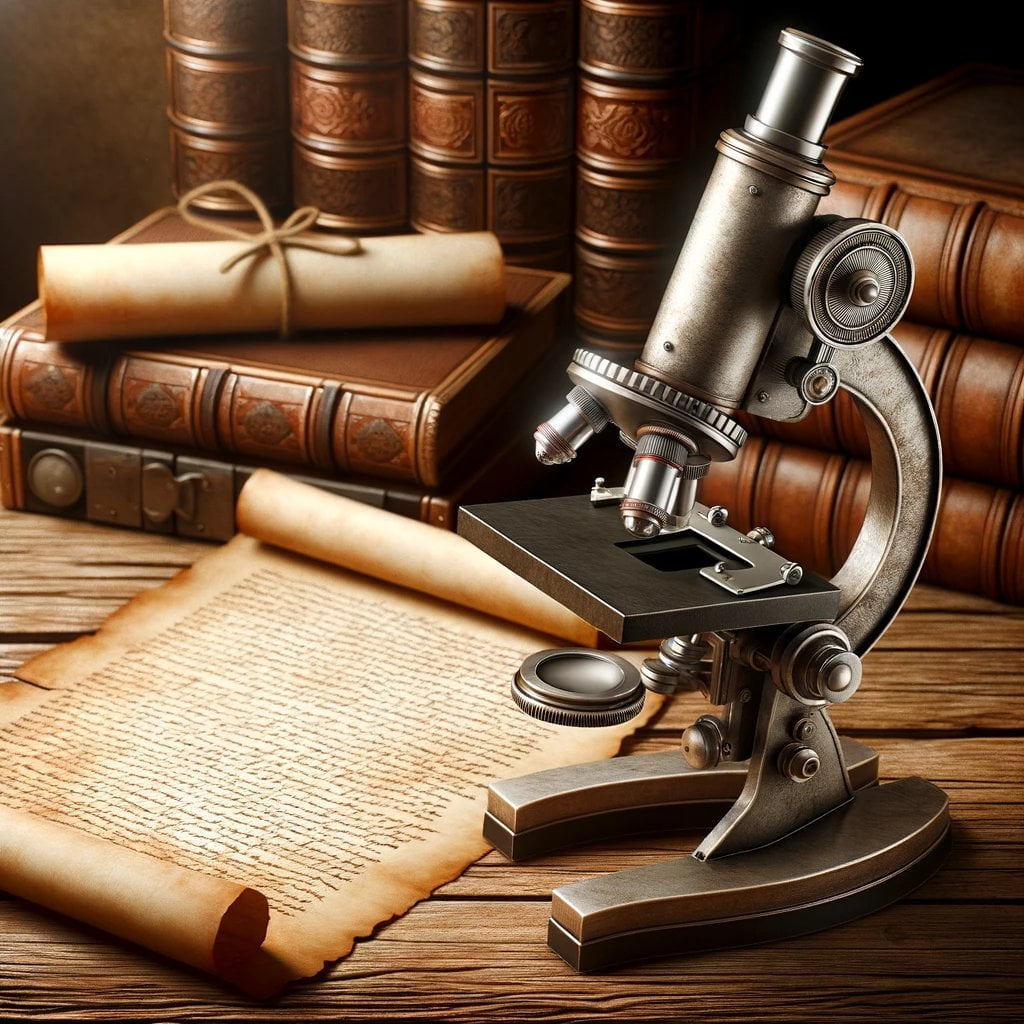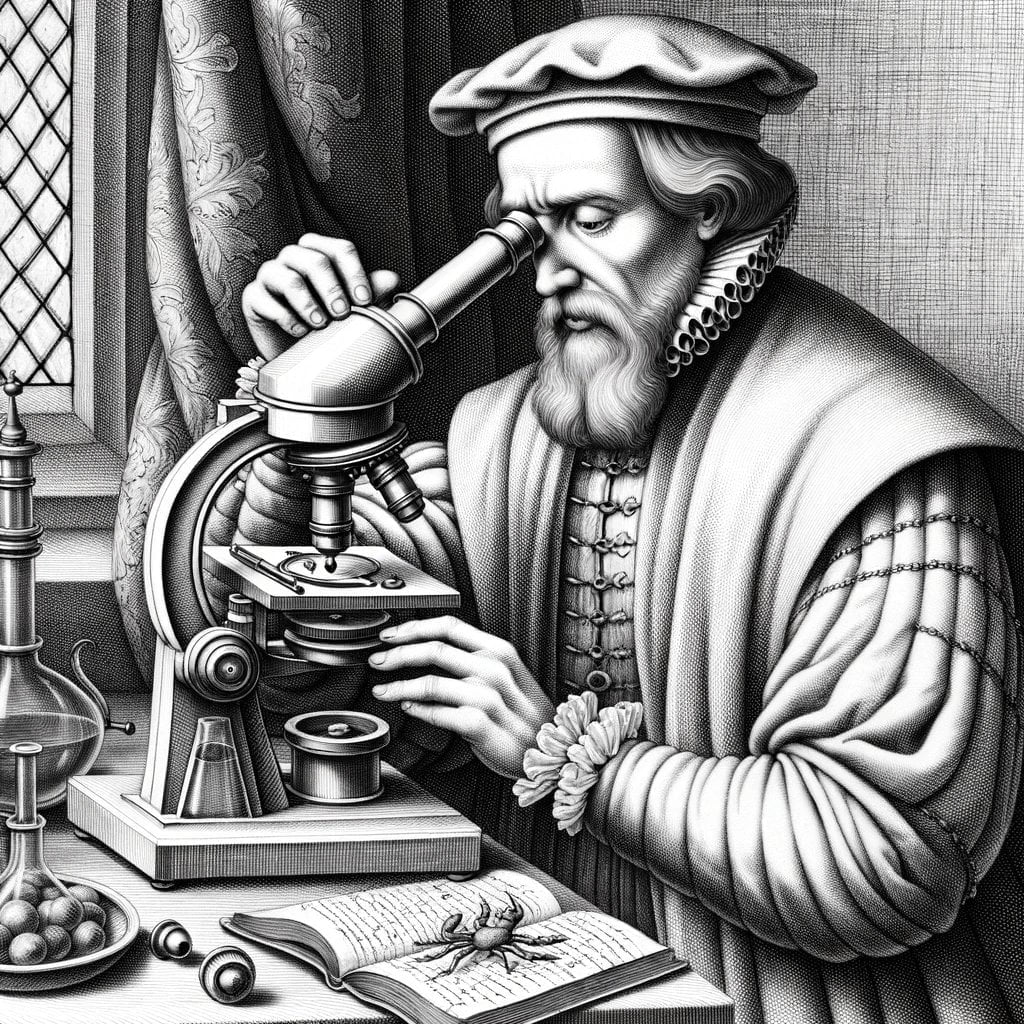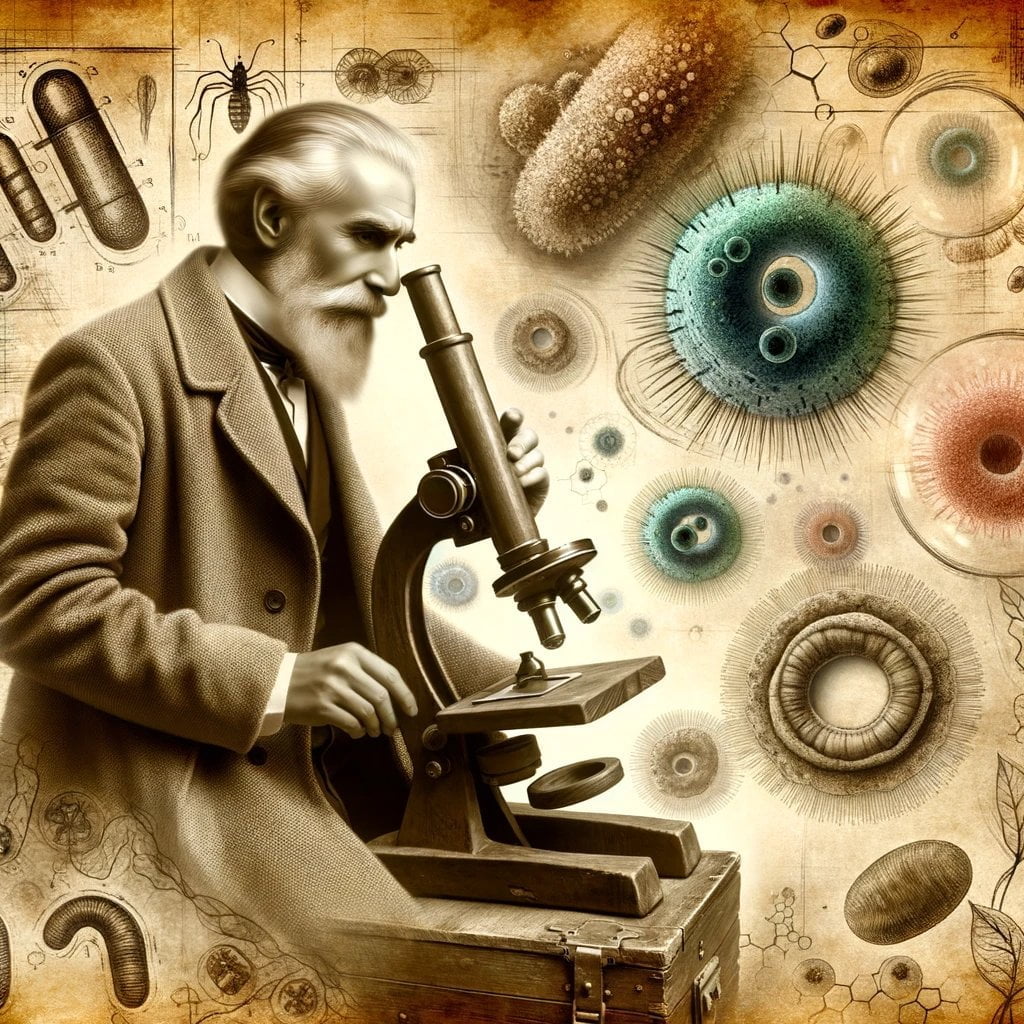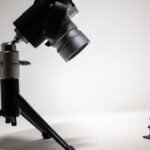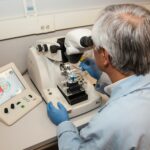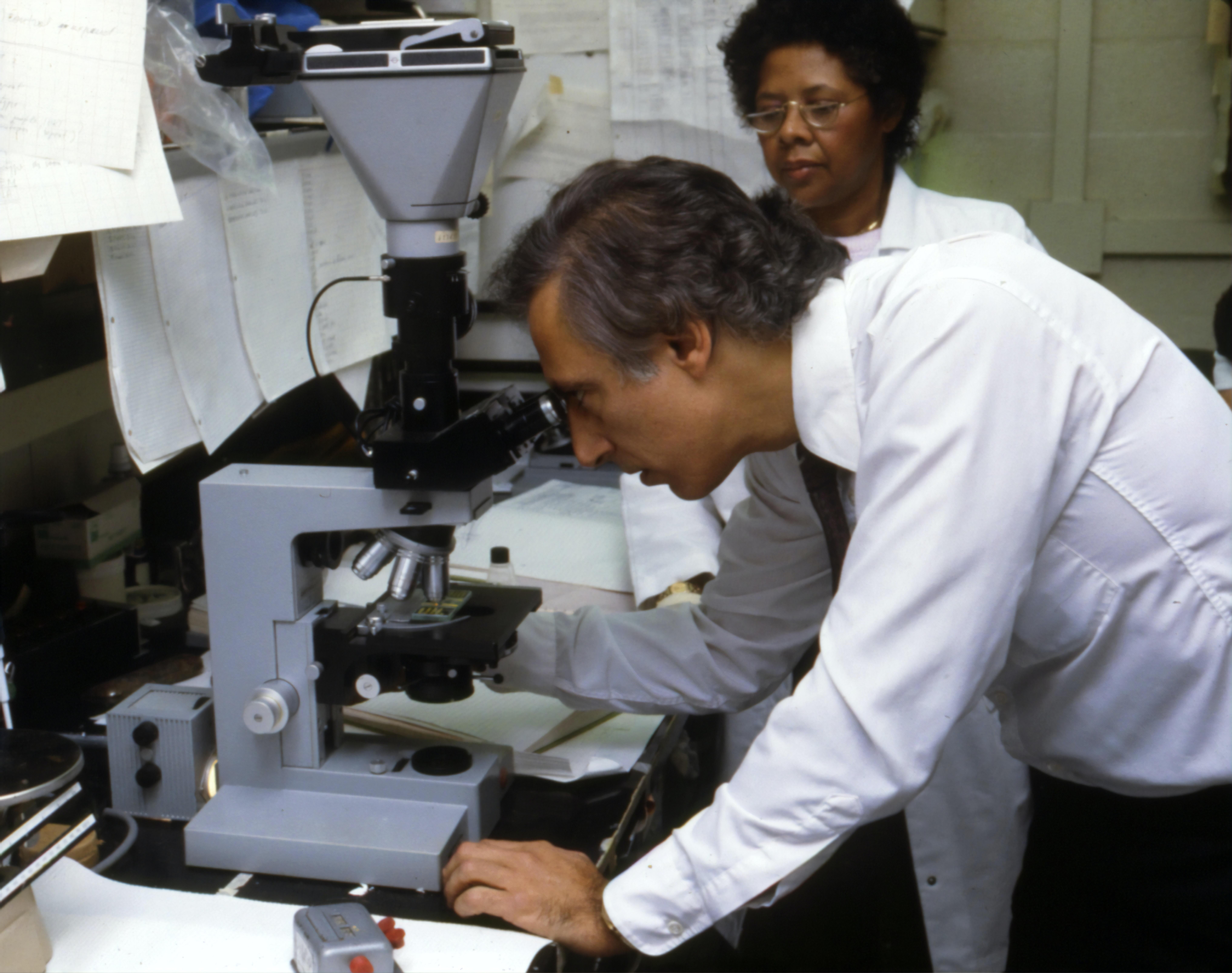Buckle up, dear reader, as we take a wild ride back in time to the birth of microscopy, where the world took on a whole new dimension. Join us as we meet the brilliant minds who dared to look closer, changing how we saw everything from tiny creatures to the cells that make us up. This is the story of pioneers who pushed the boundaries of science and gave us the tools to explore the unseen, paving the way for breakthroughs in medicine, biology, and beyond. So, get ready to dive into “The Birth of Microscopy: Unveiling the Hidden World Through the Lens of Pioneers,” a tale that will leave you in awe of the power of curiosity and innovation.
Who Unraveled Nature’s Secrets with the Microscope?
Picture this: you’re in the 1670s in the Netherlands. A man named Antonie van Leeuwenhoek, who makes eyeglasses, is fascinated by the wonders of nature. One day, he decides to grind lenses for microscopes, and that’s when the game changes.
Imagine creating these tiny instruments that magnified objects up to 200 times! Leeuwenhoek’s microscopes were like magical magnifying glasses that could reveal the tiniest details.
He spent hours observing pond water, and presto! He discovered a whole world of living creatures that no one had ever seen before. He called them “animalcules,” and they turned out to be the tiny bacteria and protozoa we know today.
But hold on, some historians say that the Dutch spectacle craftsmen, Zacharias Jansen and his dad Hans, might have invented the first compound microscope in the late 1500s. Who knows for sure?
Either way, it was Leeuwenhoek’s passion and skill that made the microscope a game-changer. He opened up a whole new realm of knowledge about the world around us.
From studying blood cells to understanding diseases, Leeuwenhoek’s microscope gave us the power to see the unseen. It’s like he unlocked a secret door in nature, forever changing the way we perceive the world.
Microscopes are extraordinary instruments that enable us to investigate the concealed realm of the minute. You’re in luck if you’re interested in learning intriguing facts about the microscope. An exhaustive compilation has been assembled exclusively for your perusal. Anticipate to be astounded by all aspects of this scientific instrument, including its history and the variety of its components and types. Discover these facts and more by clicking here: facts about the microscope.
If one has ever pondered the brilliant individuals responsible for the development of the microscope, they are about to delve into its intriguing history. Venture into a realm where inquisitiveness is limitless and where pioneers stretch the limits of scientific inquiry and exploration. Gain insight into the extraordinary pioneers who shaped history, including Antonie van Leeuwenhoek, as you explore the riveting account of the inventor of the microscope. Anticipate to be mesmerized by the ingenuity that propels their creation forward and the revolutionary influence it has wielded throughout the annals of scientific inquiry. Are you prepared to explore the obscure domains of the microscopic realm? Click here to learn more about the inventor of the microscope.
Join us on an intellectual exploration of the origins of this extraordinary scientific instrument. Scholars and history buffs have been perplexed by the determination of the microscope’s inventor. Together, we shall delve into the archives in search of the names and legacies of those visionaries whose contributions irrevocably altered the trajectory of scientific inquiry. These individuals, ranging from trailblazing inventors to intelligent minds driven by unquenchable curiosity, have significantly contributed to our comprehension of the surrounding world. To uncover the intriguing story of who created the microscope, click here: who created the microscope.
Exploration of the marvels of the microscopic realm as observed through the lenses of these resourceful inventors will transport you to another era. Their contributions, ranging from revolutionary discoveries to ground-breaking instrumentation, have significantly influenced the fields of science and medicine. Embrace the enthralling narrative of the inventor of the microscope as you explore unexplored domains teeming with the most profound enigmas concealed in plain sight. Anticipate to be captivated by the narratives that transpire, which will reveal the mysteries of existence and inspire an unrelenting quest for wisdom. Join us on this enthralling expedition by clicking this link: inventor of the microscope.
When was the Microscope Invented?
It’s like taking a peek into another dimension! The invention of the microscope opened up a whole new world that was previously invisible to us. But who exactly came up with this amazing tool?
The First Microscopes: A Dutch Invention
Around 1590, a Dutch father-son duo named Zacharias and Hans Janssen stumbled upon something incredible. They were lens grinders, crafting lenses for eyeglasses and other optical devices. One day, they decided to put a few lenses together inside a tube and, voila! They had created the first light microscope.
Magnifying the Tiny World
This first microscope magnified objects up to 20 times, which was like giving us superpowers to see things we couldn’t before. It was a revolutionary idea at the time. While the exact inventor is still up for debate, the Janssens are often recognized as the pioneers of this groundbreaking invention.
From Curiosity to Scientific Breakthroughs
At first, people were more impressed with the novelty of the microscope than its potential for scientific research. But it wasn’t long before scientists realized the immense value of this tool. Biologists used it to discover cells and bacteria, chemists analyzed the structure of molecules, and doctors could finally observe and diagnose diseases more accurately.
The Microscope’s Legacy
Today, the microscope is an essential tool in many fields, from healthcare to manufacturing. Its invention revolutionized our understanding of the world and has made countless scientific discoveries possible. It’s a reminder that sometimes the most transformative inventions come from humble beginnings.
How has the microscope evolved over time?
The journey of our tiny-viewing tool, the microscope, has been a fascinating one, transforming from a simple magnifying glass to our modern scientific marvels. Let’s take a closer look at its milestones:
Optical Beginnings:
Back in the days, when lenses were just starting to show off their powers, they gave birth to the early microscopes. These humble tools, like a magnifying glass in your pocket, let our curious minds zoom in closer than before.
Compound Microscopes:
A leap forward came in the 1500s with the invention of the compound microscope. It’s like a team of lenses, working together to magnify objects even further, revealing a whole new world unseen before.
Light Microscopes:
For a long time, light microscopes ruled the scene. They use visible light to illuminate the tiny world, and scientists used them to explore the wonders of plants, animals, and more. These trusty companions still accompany us in many laboratories today.
Electron Microscopes:
In the 1930s, a revolution struck. Electron microscopes entered the picture, employing a beam of electrons to unveil objects in unprecedented detail. They were like powerful X-rays for our microscopic adventures, pushing our understanding of the ultra-tiny realm.
The Microscope Today:
Today, microscopes come in all shapes and sizes. From powerful electron microscopes revealing the secrets of atoms to compact handheld models, they’re versatile tools in the hands of scientists, researchers, and curious minds alike. They continue to evolve, opening up new frontiers of scientific discovery.
What are the different types of microscopes?
Microscopes are like the cool gadgets that let us spy on the tiny world that we can’t see with our own eyes. But just like there are different kinds of spy gadgets, there are also different types of microscopes, each with its own special strengths.
Simple Microscopes: The Beginners’ Guide to the Micro World
Imagine a magnifying glass, but better! Simple microscopes use a single lens to show you a bigger, closer look at tiny things. It’s like the first step into the world of microscopic exploration.
Compound Microscopes: Leveling Up the Magnification Game
These microscopes are like the SUVs of the microscope world. They use multiple lenses to give you an even more zoomed-in view. It’s like having an ultra-powerful zoom lens on your camera, but for the really tiny stuff.
Phase Contrast Microscopes: Bringing Transparency to Life
Some things like cells and bacteria are a bit too transparent for regular microscopes. But phase contrast microscopes have a secret weapon: special lighting that makes those transparent wonders visible. It’s like adding some color and drama to a black-and-white movie.
Fluorescence Microscopes: Unraveling the Secrets of Cells
Fluorescence microscopes are like detectives with a special flashlight. They shine a special light on cells and tissues, and some parts of them light up like a disco ball. This helps us see the different parts and processes inside cells, like watching a tiny fireworks show.
Electron Microscopes: Exploring the Ultra-Tiny
Electron microscopes are the ultimate zoom machines. They use electrons instead of light, which allows them to see even the smallest of tiny things, like atoms and molecules. It’s like having a microscope that can zoom in all the way to the atomic level.
| Type of Microscope | Magnification | Uses |
|---|---|---|
| Simple Microscope | 10-100x | Beginner-friendly exploration |
| Compound Microscope | 40-1000x | Studying cells and microorganisms |
| Phase Contrast Microscope | 100-500x | Examining transparent specimens |
| Fluorescence Microscope | 200-1500x | Visualizing cell processes |
| Electron Microscope | 100,000-1,000,000x | Exploring atoms and molecules |
FAQ
Q1: Who is known as the “Father of Microbiology”?
A1: Antonie van Leeuwenhoek is widely recognized as the “Father of Microbiology” for his pioneering contributions to the development of the microscope and his groundbreaking observations of microorganisms.
Q2: When and by whom was the first microscope invented?
A2: The invention of the first microscope is generally attributed to Zacharias Janssen and his father Hans in the late 16th century (around 1590), although the exact inventor remains a subject of debate.
Q3: How was Antonie van Leeuwenhoek’s microscope different from previous designs?
A3: Van Leeuwenhoek’s microscopes, designed in the 1670s, were relatively simple single-lens microscopes. While they resembled magnifying glasses, his exceptional craftsmanship allowed him to achieve magnifications of up to 200 times, far surpassing the capabilities of earlier microscopes.
Q4: What were some of the major contributions of Zacharias Janssen and his father to the development of the microscope?
A4: Zacharias Janssen and his father, Hans, are credited with creating the first compound microscope, which used multiple lenses to achieve higher magnifications compared to single-lens magnifying glasses. Their invention marked a significant advancement in microscopy, paving the way for more detailed observations of the microscopic world.
Q5: How did the invention of the microscope impact scientific fields?
A5: The invention of the microscope revolutionized scientific fields such as biology, medicine, and chemistry. It allowed scientists to observe and study objects too small for the naked eye, leading to groundbreaking discoveries in areas such as cell theory, microbiology, and the identification of microorganisms responsible for diseases.
